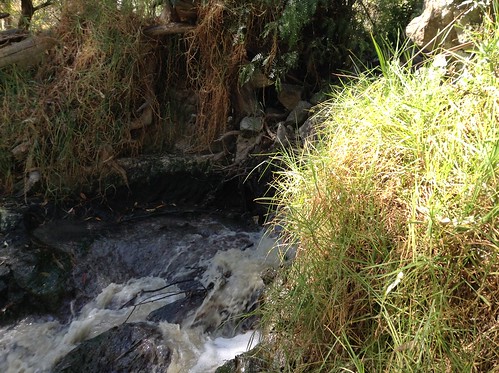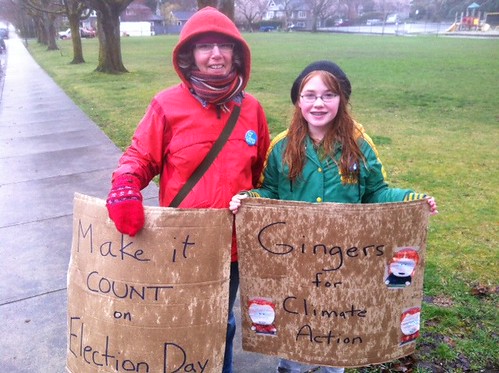I have engaged in a number of interesting projects throughout the years. The following is just a sample of my funded projects over the last decade.
Design elements for a climate policy evaluation office in Mexico: Conceptual framework and institutional architectures.
With funding from the United States Agency for International Development (USAID) through World Wildlife Fund Mexico (WWF-Mexico) and Mexico’s Low Emissions Development Programme (MLED), I led a team of researchers who undertook an institutional design and generated conceptual and methodological models to aid the evaluation of Mexico’s national climate change policy. The project led to the creation of the first-ever Office of Climate Policy Evaluation, housed by the Mexican Institute of Ecology and Climate Change (Instituto de Ecologia y Cambio Climático, INECC).
Wastewater and sanitation governance in the context of integrated watershed management in Mexico
Traditionally, the study of wastewater has been neglected by social science scholars. I am interested in holistic, integrative research strategies that examine the hydrological cycle as a whole instead of focusing only on water scarcity. As a result, for the past decade, I have focused my empirical research around sanitation and wastewater policy. I am interested in understanding better water governance methods and thus I have conducted empirical research using a variety of methods (semi-structured and structured interviews, surveys, site visits, document analysis and in-depth literature reviews) on wastewater management in Mexico. The case study I am most familiar with is the Lerma–Chapala river basin in central Mexico, though I have also studied Mexican sanitation policy at the national level. My research has elucidated variations in governance structures, management strategies and degrees of citizen involvement in wastewater policy.
With funding from the National Science and Technology Council of Mexico (Consejo Nacional de Ciencia y Tecnologia, CONACYT) and the state of Guanajuato Science and Technology Council (Consejo de Ciencia y Tecnologia del Estado de Guanajuato, CONCYTEG), I undertook a basin-wide, cross-regional comparative analysis of wastewater policy. Fieldwork for this study (36 months) spanned the five states that comprise the Lerma-Chapala river basin (Guanajuato, Jalisco, Michoacán, State of Mexico and Querétaro). Using common-pool-resource (CPR) theory and the Institutional Analysis and Development (IAD) framework (Kiser and Ostrom 1982, Ostrom 2002, Ostrom et al 2003, Ostrom 2011), I analyzed the multilevel governance structures of watershed councils and state-level water agencies. I assessed the Lerma-Chapala river basin council’s effectiveness (for sanitation and wastewater) and compared it with the national context of watershed councils. Previous social science and engineering analyses of the Lerma-Chapala paid no attention to wastewater governance mechanisms and the effectiveness of multilevel governance structures. This project was the first social-science, multidisciplinary treatise of wastewater governance in Mexico and its results and insights could be replicated in other jurisdictions.
I followed up my 36 months of on-the-field research with subsequent field trips, additional primary and secondary sources and updated the results of this project in a couple of forthcoming volumes (to be published in English and in Spanish). While both books manuscripts are focused on the governance of wastewater, they are quite different from each other and not an exact translation (even the book structure is different!)
Environmental mobilizations and influence strategies by environmental non-governmental organizations (ENGOs)
Ever-changing governance structures and an increased emphasis on citizen participation in environmental policy-making have brought about a shift in the way policy is created and implemented. Civil society organizations have I have a standing interest in understanding ENGO behavior and their degree of influence over industry and national governments. I have conducted empirical research for the past 10 years on how environmental NGOs across North America (Canada, US, Mexico) create transnational networks (coalitions) to influence national governments through various influence mechanisms. The empirical research I have conducted has heavily relied on document analysis, semi-structured and structured interviews.
With funding from the Programa Interinstitucional de Estudios de la Región de América del Norte (Interinstitutional Programme of Research on the North American Region), Jonathan Fox from University of California Santa Cruz, Inger Weibust from Carleton University and myself examined empirically the case study of the Citizen Submission on Enforcement Matters mechanism (CSEM) of the North American Commission for Environmental Cooperation (NACEC). This project sought to undertake an independent, field-based assessment of the effectiveness of the CSEM mechanism in promoting transparency and government accountability of the North American countries. We found that CSEM was primarily used by Canadian and Mexican ENGOs without much use from US ENGOs. We showed this was a result of second-order pressure transmission mechanisms and domestic institutional structures. I was the Principal Investigator of this project, with Weibust and Fox as co-investigators.
Industrial restructuring under multiple stressors in the Mexican leather and footwear clusters
My doctoral research focused on the impact of multiple drivers on the industrial restructuring of two clusters embedded in two Mexican cities (Leon, Guanajuato and Guadalajara, Jalisco). I investigated the effect of changes in technology, product mix, environmental regulation, zoning policies and international trade on the way in which individual firms adapted to negative external circumstances. Methodologically, I used a mixed approach, both with quantitative metrics of firm decline and survival and qualitative elements.
With funding from the Mexican government (CONACYT, PhD Scholarship for 4 years), the US government (NSF gift to Carnegie Mellon University Centre for the Integrated Study of Global Environmental Change) and Canada (Canada Research Chairs Programme), I completed my doctoral dissertation in resource management and environmental developing a new model of thinking about industrial restructuring that includes multiple stressors. Multiple stressors can have potentially compounding negative effect on allied industries as they can have cross-scalar, non-easily-traceable impacts. My dissertation explored the impact of three main drivers of structural change: market pressures, environmental regulation and changes in land use and land pricing, exploring two case studies of leather and footwear industrial clusters in Mexico, located in the cities of León and Guadalajara. Responses to restructuring drivers in León and Guadalajara are substantially different.
Firms in the leather and footwear cluster in León implemented countervailing strategies such as price competition, government lobbying, and more recently, investment in socio-economic research (competitiveness) projects. However, firms in the leather and footwear cluster in Guadalajara focused on a specific, high-end target market. At the larger, urban scale, footwear and its allied industries in the city of León resisted change and have tried to remain in operation while the city of Guadalajara has focused on a diversification strategy, attracting new (arguably more technically advanced) industries.
My thesis offered empirical and theoretical advances. Empirically, it applies a firm demographics approach to the study of industrial clusters under multiple stressors. This approach has not been previously used on Mexican data. Theoretically, my doctoral thesis demonstrates that future analyses of industrial complexes’ structural change can be strengthened through the use of an integrated assessment framework investigating the effect of multiple stressors (market forces, land pricing, technical change, environmental regulations, and consumer preferences) on industrial restructuring.
The politics of North American environmental policy instrument choice and adoption (with an emphasis on pollutant release and transfer registry)
Environmental policy instrument choice is often a tough task for government officials and bureaucrats. The rationale behind regulatory instruments is a lackof trust in the ability of industry to self-regulate. Other instruments’ popularity has increased recently, such as the market-based instruments (cap and trade, green taxes). I am more interested in information-dissemination instruments such as the pollutant release inventories. These registries are predicated on the assumption that civil society will use the information acquired about the amount of pollutants to put pressure on government officials.
With my colleagues Kathryn Harrison (The University of British Columbia) and Mark Winfield (York University), I explored whether adoption of the Pollutant Release and Transfer Registry in Mexico (Registro de Emisiones y Transferencia de Contaminantes, RETC) could be explained using policy learning and policy transfer theory. We found that while policy learning and policy transfer could offer an explanation in the evolution of RETC as a policy instrument, institutional structures and transnational pressures also played a factor. I also have demonstrated that Mexican ENGOs build transnational coalitions to put pressure on its government to adopt specific policy instruments.






2 Responses
Stay in touch with the conversation, subscribe to the RSS feed for comments on this post.
Continuing the Discussion